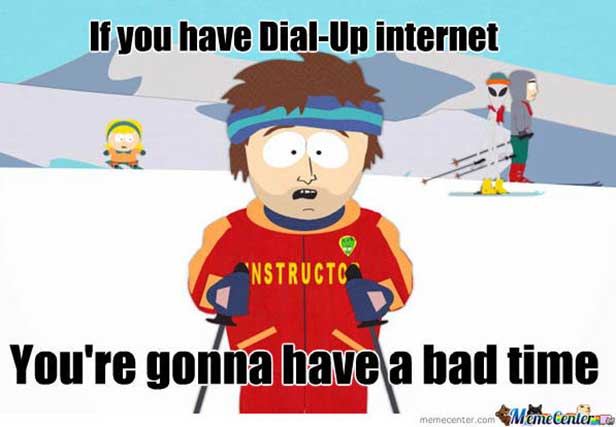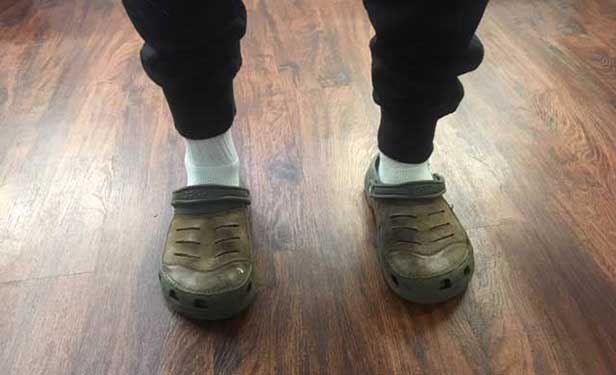March 13, 2020
How to Not Stink at Working From Home
These practices keep me on-task, productive and out of the YouTube/Netflix rabbit holes.
The first time I ever worked from home I felt like a good-hearted kid who had, out of character, stolen a lollipop from the convenience store and gotten away with it: guilty and a bit afraid.

Surely, I was a terrible person for doing this. This was wrong, but I did it anyway. I have to go back to the store – err, office – and set things right.
The handwringing was the result of an old-school mindset about work and conditioning from a prior job where I was ironbound to the office. Still, after those early tremors, I kind of got the hang of things. I didn’t, as I had initially worried, devolve into a Netflix-streaming sloth or adopt Hagrid’s habits on personal grooming.

In fact, I was soon functioning smoothly, as productive as when physically present in the office. As the COVID-19 pandemic disrupts work schedules, prompting many who can to work from home with regularity for the first time, I thought I’d share some personal do’s and don’ts on how I’ve managed things. Steal or ignore as you see fit.
Follow a Routine: Whether I’m going into the office or working from home, I rise at the same time and do the morning get-up-go. Make the coffee, feed the cats, walk the dogs around the yard, sip the coffee, do initial email checks/responses, move some work things along as possible, smooch the wife when she wakes, bit of exercise, hugs and a little chat with my kids before they’re off to school, a shower and then dig into the workday in earnest. (Come to think of it, the boys would probably appreciate it if I did the post-exercise shower before the hugs, but I digress.) Anyhow, the details aren’t super important, IMHO. What’s important is that you get the day rolling in a way that let’s your brain/body know that it’s a workday – a day for moving the ball forward.
DON’T: Day Drink. This should be obvious.
Create a Written Daily To-Do List: When you’re in the office, you aim to operate with efficiency. You want to power through the day, get done what you need to, have things properly prepped for tomorrow, and then get the heck out of there so you can move on to family, friends or something else, right? Well, a written daily to-do list provides the framework for achieving all that. Just as you’d have a list on an office day, you should also have one at home, adhering to it as much as possible and moderating only when overriding concerns that need immediate attention press in.
Find a Work Space That’s Comfortable For You: It may sound self-evident, but I’m slow. I spent a while working at the kitchen table. It was only after I moved to another area that I realized how much better I was able to focus. Some will totally trick out their work spaces into a full-blown home office. Go that route if it’s right for you. For me, the couch, a coffee table and a couple of puppies for company is my work-from-home happy place. Ultimately, it’s about finding your personal sweet spot. Regardless, I reckon you probably want to be in an area where distractions are minimal, especially if you have a spouse who works from home or kids present.

Oscar and Ollie, my work-from-home mates
Keep Set Hours: Aim to start your workday the same time you would if you were in the office. Then, go through until the time you would typically end at the office. Nowadays, many of us are on 24/7 – I get that. But still, there should be some distancing. Just as you would leave the office at a certain time and maybe thereafter just check email/voicemail and respond as necessary, take similar steps when working from home. Power down the computer and go about doing your life, keeping tabs as you might normally on your phone.
Take a Break: No matter how nutso busy a day gets, I still take 20 minutes or so to walk outside, be it the height of summer or depth of winter. It clears the head and helps me retool for the rest of the workday. We’re not software programs; we can’t run constantly without seeing a drop-off in work quality. Figure out what kind of break(s) re-energize you, and be sure to take them.
HAVE: A Good Internet Connection.

Be a Little Extra Cheery in Emails: When I’m working from home, a lot of my interaction with colleagues comes through email. Since we can’t hear voice tone and see all the nonverbal cues that happen with face-to-face interaction, I think it’s extra important to write messages in a way that conveys friendliness to help avoid anyone inadvertently reading any snarky subtext into what I say. That helps keep relationships healthy. Lots of “thanks yous,” appropriate jokes, funny memes and gifs, phrasing like “hope you’re good,” and a few extra exclamation points in saying job well done affirm that you mean well. Maybe it’s a touch hokey, but I don’t care. It makes a positive difference.
Use Tech Tools: Of course, you don’t have to rely on email alone. Use Skype or a similar service for video calls with clients and colleagues. Also, leverage technology to stay organized and to ensure you have adequate backup for your work. Save documents to a cloud storage service so you can access them anywhere. Invest in a Web-based project management service. It all can help.
DON’T: Get lost down the rabbit holes of YouTube, videogames, Netflix, TV, etc.
Have Healthy Snacks Handy: Those dag nab potato chips are always calling to me. At home, it’s easy to succumb to their intoxicating whisper. And so, I keep healthy snacks around to fend off the cravings for the salty, crunchy loveliness we stock for occasional indulgence. Eating better translates to thinking clearer for me. So I try to resist the junk. Not always successfully.
Whatever on Work Dress: Some advise “dressing for success” when working from home. At first, I thought maybe it was important. Not so anymore. I work fine just as well in crocs and socks and basketball shorts as I do in a collared shirt and crisp slacks. That said, if you suddenly transform into an archetypal ’90s slacker when wearing sweatpants, then dress in “day clothes” that get your mind right.

